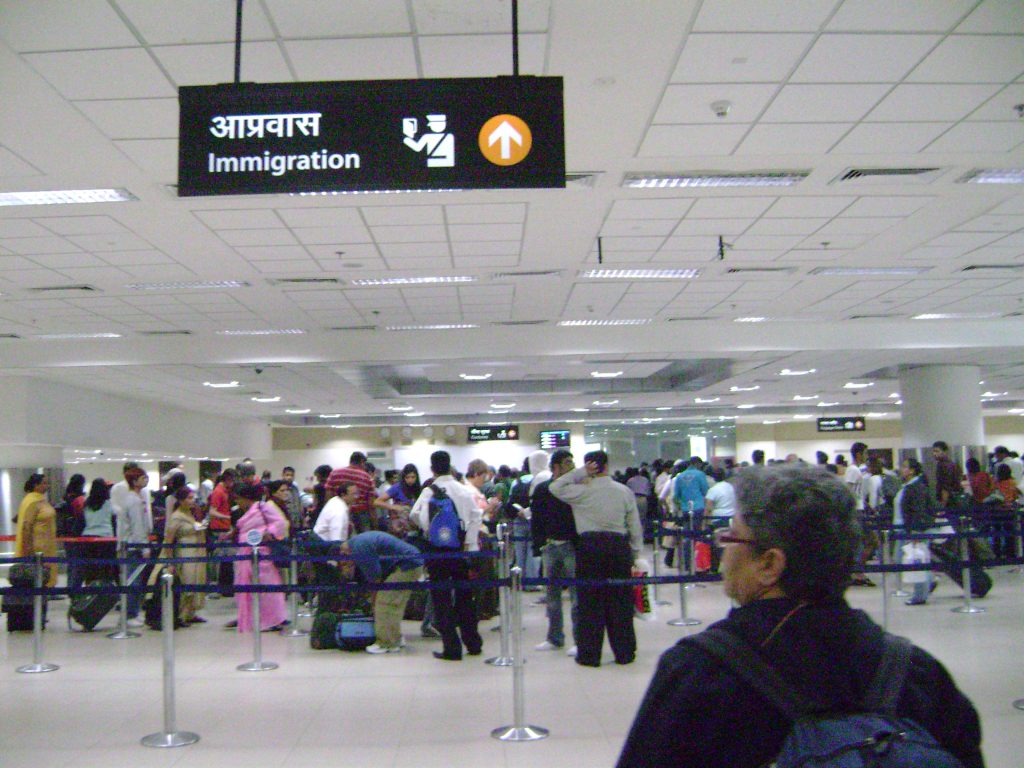Understanding Immigration: A Comprehensive Overview
Immigration is a complex and often debated topic that has significant implications for countries worldwide. As global migration patterns continue to evolve, it becomes increasingly important to gain a comprehensive understanding of immigration, its causes, consequences, and the various factors that influence it. This informative article aims to provide readers with a neutral and educational overview of immigration, shedding light on its historical context, the motivations behind migration, the economic and social impacts, as well as the policies and challenges that countries face in managing immigration flows. By delving into the multi-faceted dimensions of this issue, we seek to foster a broader understanding and dialogue about immigration that goes beyond simplistic narratives or stereotypes.
Immigration: Definition, Factors, and Global Trends
Immigration is the voluntary movement of people from one country to another with the intention of establishing permanent residence. It is a complex phenomenon influenced by numerous factors, including economic, social, and political forces. Typically, individuals or families migrate to another country in search of better opportunities, improved quality of life, or to escape unfavorable living conditions. Let’s delve into the various factors that drive immigration and explore some of the global trends.
Factors driving immigration:
- Economic opportunities: Many immigrants seek better job prospects and higher wages that are often scarce in their home countries. Developed nations attract skilled workers in industries such as technology, finance, and healthcare.
- Social factors: Sociopolitical instability, armed conflicts, or human rights abuses in certain regions can compel individuals to leave everything behind and seek safety in foreign lands.
- Education and research: Students migrate abroad to pursue higher education, access top-notch research facilities, or gain international exposure in their field of study.
- Family reunification: Individuals often immigrate to reunite with family members already settled in a different country, fostering stronger support networks.
Global trends in immigration:
In recent years, immigration patterns have witnessed some noteworthy global trends:
- Increasing urbanization: A large proportion of migrants are moving to urban areas, leading to the growth of cosmopolitan cities and diverse cultural landscapes.
- Refugee crisis: The world is experiencing the highest levels of displacement on record, with millions of people seeking refuge due to conflicts in countries like Syria, Afghanistan, and Venezuela.
- Brain drain: Skilled professionals from developing nations are often attracted to developed countries, leading to a loss of talent in their home countries.
- Integration challenges: Successful integration of immigrants remains a significant challenge for receiving countries, as it involves cultural assimilation, language barriers, and the creation of inclusive policies.
Understanding the definition, factors, and global trends surrounding immigration helps shed light on the complexities involved in this global issue. It is crucial to approach immigration with empathy, recognizing its impact on both the immigrants and the host countries.
Understanding the Economic Impact of Immigration on Host Countries
Immigration is a highly debated topic, with one critical aspect being its economic impact on host countries. It is essential to analyze and understand the economic consequences to have a balanced perspective on this issue. While there are various viewpoints on this topic, this section aims to provide insights into the economic effects that immigration can have on host countries.
1. **Labor Market**: Immigration can influence the labor market dynamics by increasing the overall workforce. When immigrants contribute their skills and talents, it can fill gaps in sectors facing labor shortages. This injection of human capital can drive economic growth and competitiveness. However, concerns arise when there is perceived competition for jobs, potentially affecting native workers’ wages and employment opportunities.
2. **Innovation and Entrepreneurship**: Immigrants often bring fresh ideas, diverse perspectives, and entrepreneurial spirit to host countries. They can fuel innovation, create new businesses, and generate employment opportunities. Studies have shown that immigrants are more likely to start new ventures, stimulating economic prosperity. However, it is crucial to strike a balance between embracing diversity and ensuring a level playing field for both immigrants and indigenous entrepreneurs.
3. **Fiscal Impact**: Assessing the fiscal impact of immigration is complex. While immigrants contribute to tax revenues through earned income, they also benefit from public services and social welfare programs. The net fiscal effect can vary depending on factors like the immigrant’s age, education, and employment status. Moreover, economic growth resulting from immigration can lead to increased tax revenue. Thus, a comprehensive analysis is necessary to evaluate the overall economic contribution and cost of immigration.
Exploring the Socio-Cultural Consequences of Immigration
Immigration has always been a topic of debate, particularly when it comes to its socio-cultural consequences. As immigrants settle in new countries, they bring with them their own traditions, languages, and values. This blending of cultures can have a profound impact on society, shaping not only the cultural landscape but also the social fabric of a nation.
One significant consequence of immigration is the diversification of a society. Immigrants often introduce new perspectives and customs, enriching the cultural tapestry of a country. This cultural exchange can foster tolerance, understanding, and appreciation for different ways of life. Moreover, it promotes a sense of multiculturalism, where people from different backgrounds learn to coexist peacefully and celebrate their shared humanity.
However, it is essential to acknowledge that immigration can also lead to socio-cultural challenges. Cultural clashes may arise as values and norms of different immigrant groups encounter those of the host society. These conflicts can manifest in a variety of ways, such as language barriers, discrimination, or resistance to change. It is crucial for effective integration policies to be in place to address these challenges and facilitate a harmonious coexistence.
In addition to cultural diversity and potential conflicts, immigration also influences several aspects of society. For instance, it impacts the labor market and can contribute to economic growth, as immigrants bring diverse skills and contribute to innovation. On the other hand, it can also create tensions related to job competition and unequal distribution of resources.
In conclusion, immigration undeniably has socio-cultural consequences that shape the societies we live in. By embracing diversity, promoting integration, and understanding the challenges, countries can make the most out of immigration’s potential benefits while effectively addressing the associated difficulties. Ultimately, fostering an inclusive and accepting society should be the aim, where diversity is not seen as a threat but as a source of strength and enrichment.
The Challenges of Immigration: Integration and Assimilation
As countries continue to face the complexities of immigration, one of the key challenges is ensuring successful integration and assimilation of immigrants into society. This process involves enabling newcomers to participate fully in their adopted country while preserving their cultural identities. However, several hurdles must be overcome for this integration to thrive:
- Language Barrier: Communication is pivotal in fostering understanding and collaboration between immigrants and natives. A significant obstacle to integration is often the language barrier faced by newcomers. Lack of proficiency in the local language can hinder social interactions, employment opportunities, and overall integration.
- Cultural Differences: Cultural differences between immigrant communities and the host society can pose challenges to integration. Navigating different norms, values, and traditions can create misunderstandings and hinder social cohesion. It is essential to promote cultural awareness, respect, and acceptance among both immigrants and natives to bridge these gaps.
- Economic Disparities: Economic disparities can impede the integration process as immigrants often face difficulties in accessing employment opportunities that match their skills and qualifications. Unequal access to education, job discrimination, and lack of recognition of foreign credentials contribute to these disparities and hinder successful integration and assimilation.
Efforts to address these challenges require collaborative approaches between governments, organizations, and society at large. Implementing language acquisition programs, cultural exchange initiatives, and promoting equal economic opportunities can foster integration and encourage immigrants to fully participate and contribute to their new communities. Overcoming these challenges will ultimately lead to a more inclusive and harmonious society, where the strengths of diverse cultures can flourish.
Ensuring Successful Immigration Policies: Best Practices and Recommendations
Developing effective immigration policies is crucial for promoting social integration, economic growth, and national security. By implementing best practices and following expert recommendations, countries can create a fair and efficient immigration system that benefits both the host nation and immigrants themselves. Here are some key strategies and suggestions to ensure successful immigration policies:
- Clear and Transparent Process: A well-defined immigration process, with easily accessible information and straightforward guidelines, is essential. Clarity in requirements, application procedures, and timelines will help immigrants understand the process, reducing uncertainty and potential frustrations.
- Flexible Visa Categories: By offering a variety of visa options, tailored to different needs and circumstances, countries can attract a diverse range of immigrants. Categories may include work visas, family reunification visas, study permits, or humanitarian visas. Collecting data on job market demands and demographic trends can assist in shaping appropriate visa categories.
- Integration and Support Programs: Successful immigration policies should include comprehensive integration programs that facilitate the settlement of immigrants and promote their participation in society. Integration services may include language classes, cultural orientation, and employment assistance. Equipping immigrants with the necessary tools to succeed empowers both individuals and the broader community.
Furthermore, it is crucial for governments to continuously evaluate and update their immigration policies to adapt to changing socio-economic conditions and emerging global challenges. In doing so, it is essential to maintain a balanced approach that supports national interests without neglecting basic human rights and humanitarian concerns. By implementing these best practices and recommendations, nations can create immigration policies that foster inclusivity, drive economic development, and ensure a harmonious coexistence for both newcomers and long-time residents.
The Way Forward: Balancing National Security and Humanitarian Concerns in Immigration
The Complexities of Balancing National Security and Humanitarian Concerns
In today’s global landscape, immigration has become a pressing issue, bringing to the fore the challenge of balancing national security with humanitarian concerns. Policymakers worldwide are faced with the arduous task of formulating strategies that ensure the safety of their citizens while acknowledging the inherent human rights of individuals seeking refuge and a better life. However, this delicate equilibrium involves navigating complex socio-political dynamics and numerous factors that demand a nuanced approach.
1. Comprehensive background checks: It is imperative to establish thorough vetting processes for individuals seeking entry into a country. Implementing comprehensive background checks, which may include criminal record screening, interviews, and biometric data collection, allows authorities to gather relevant information necessary to assess any potential threats, safeguard national security, and distinguish genuine refugees from those with ill intentions.
2. Strengthening international cooperation: In order to effectively address the challenges posed by immigration, establishing stronger cooperation between nations is paramount. Collaborative efforts and the exchange of crucial information among countries can facilitate intelligence-sharing, enable the identification of security risks, and enhance border control systems. By working together, nations can ensure a collective response that considers both national security and humanitarian concerns.
3. Integrating comprehensive support services: For those who pass the strict security protocols and are granted entry, it is essential to provide comprehensive support services to aid their integration within the host country’s society. Adequate healthcare, education, language training, and employment assistance are vital components that foster successful integration and empower immigrants to contribute positively to their new communities.
As we navigate the path forward, it is crucial to strike a balance between national security and humanitarian concerns in immigration. Forging an effective and sustainable solution requires careful consideration of these complexities, acknowledging the importance of both aspects, and making informed decisions that uphold the core values of safety, compassion, and justice.
Insights and Conclusions
In conclusion, gaining a comprehensive understanding of immigration is crucial in today’s globalized world. This article has delved into the various facets of immigration, including its historical context, reasons behind migration, and the impact it has on both sending and receiving countries. By recognizing the intricacies and complexities involved, we can foster informed discussions and make well-informed decisions regarding immigration policies.
It is imperative to acknowledge that immigration is a multifaceted phenomenon that cannot be solely attributed to any single factor. Economic opportunities, political instability, family reunification, and seeking refuge are just a few of the driving forces behind this global movement of people. Moreover, it is crucial to approach the topic with nuance and empathy, understanding that immigrants bring immense contributions to the societies in which they settle.
As a society, we must strive for inclusive and fair immigration policies that address the needs of both immigrants and their host countries. By recognizing the benefits of immigration, such as cultural diversity, innovation, and economic growth, we can work towards creating a harmonious coexistence that enriches our societies.
In light of the complexities, it is paramount to dispel stereotypes and misconceptions surrounding immigration. Through open dialogue, education, and evidence-based policies, we can dismantle barriers and foster a more inclusive and understanding society.
Ultimately, understanding immigration requires us to recognize the unique circumstances and motivations that drive individuals to seek a better life abroad. By embracing diversity and generating informed conversations, we can shape a brighter future for both immigrants and the communities they join. It is through this comprehensive understanding that we can truly appreciate the richness and value that immigrants bring to our interconnected world.





